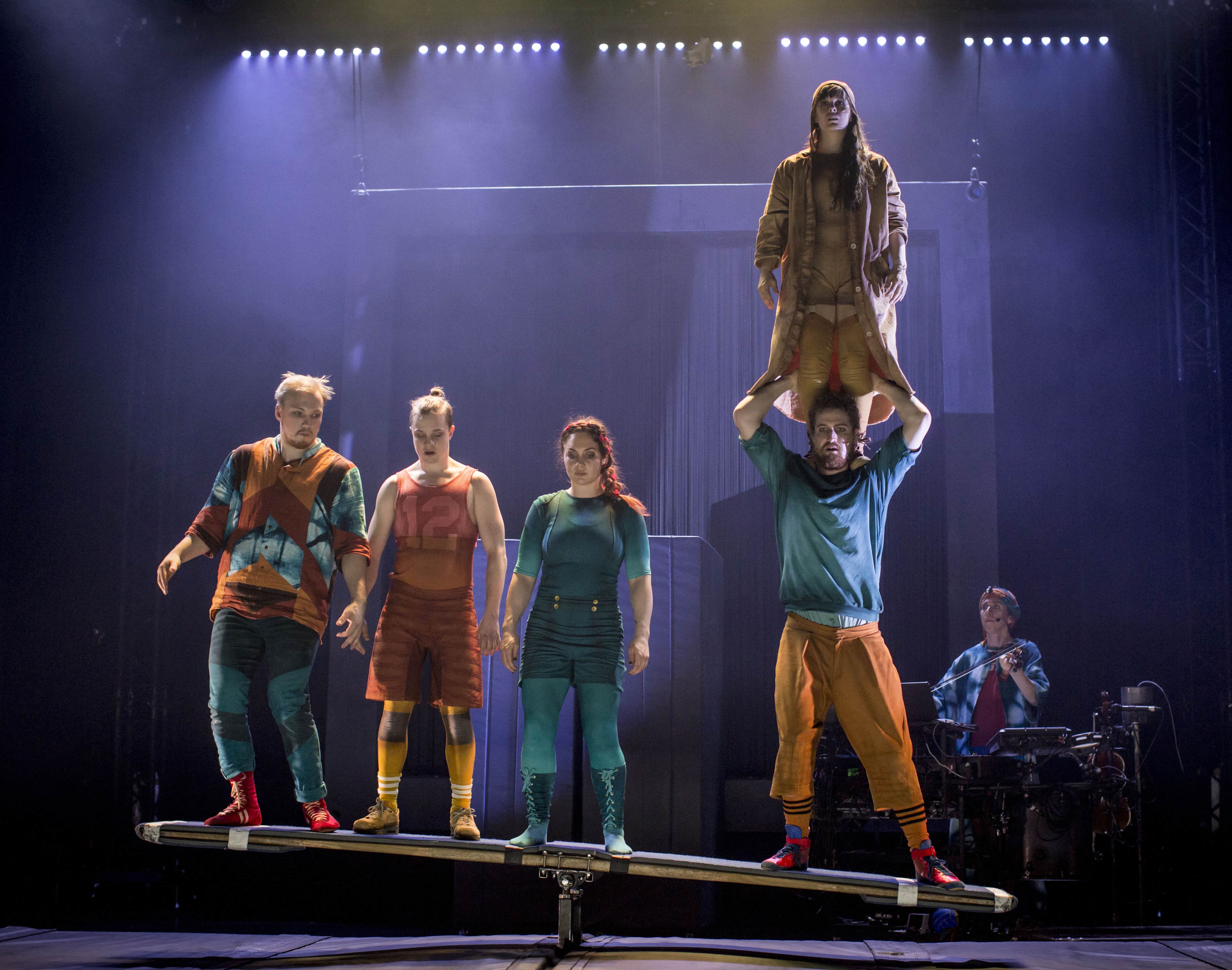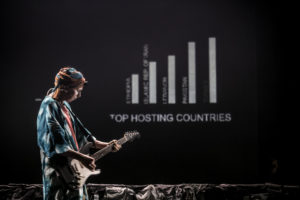The circus I fell in love with as a kid is gone. It was touted at the time as the greatest show on earth: a three-ring tented extravaganza that smelled of roasted peanuts, sawdust, and manure and traveled from town to town by train with browbeaten animals by the boxcar. It was unadulterated diversion and entertainment. No one went to the circus back then for artistic expression and thematic meaning. Such circus didn’t exist.

That all began to change in the 1970s, in France, when a human-animal-only genre emerged now known as Cirque Nouveau, or contemporary circus. It borrows acrobatics and other traditional circus skills and adds original music, character and story elements, light and sound design, and modern technology and merges it all into a live experience that goes beyond entertaining to move us as the finest performing arts do.
We don’t have such a circus based in the Metro DC area, but we are fortunately visited regularly by Montreal’s Cirque du Soleil, a company whose work I love. For decades Cirque du Soleil has been my go-to frame of reference for what Cirque Nouveau is and can be. Astonish me, I think whenever I go, and that’s what Cirque always does.

That frame of reference got stretched beyond my imagining when Sweden’s Cirkus Cirkör came to town. Here was a Cirque Nouveau that was doing not only stunning artistic expression but also powerful social-justice messaging. The show, titled Limits, touched on forced migration, nations’ inhospitality to refugees, borders as inhumane boundaries—all messaged hauntingly alongside spectacular circus acts. I’d never conceived of such a thing. And it was exhilarating.
Limits was directed by Tilde Björfors, the founder and creative director of Cirkus Cirkör. Some 20 years ago, inspired by a French Cirque Nouveau troupe’s performance in Stockholm, she started what has become in Sweden a socially engaged “circus empire.” Limits is one of three Cirkus Cirkör productions about refugees, and its message to the world is summed up in a program note by Björfors:
Anything is possible! Boundaries are meant to be crossed. Limits are meant to be exceeded! We human beings can do so much more than we believe, if we dare to challenge our limitations!
This précis gets physical as the performers in Limits persistently exceed what seems humanly possible and surmount conventions of identity delineation whose main function is division and derision.

Take the notion of trust. As one watches the trust implicit in every hand-to-hand balance, in every teeterboard somersault, in every aerialist’s catch in midair, how can one not be awed by the human capacity for having faith in one another?
At the beginning, there is a video projection of seawater under a distant bridge with seagulls in graceful flight and cacophonous squawk (there’s a glimpse in the wonderful trailer below). We hear the voice of a girl:
When I was a child and took the boat from Finland to Sweden, I was trying to see where the border was. I couldn’t imagine how there could be a border in something that is constantly moving.

Against that innocent sense of unguarded fluidity, the stark tyranny of intolerance appears in a graphic counting as if in real time how many people are being forced to leave home, forced to flee to where they have none. In another projection, refugees on foot in an endless procession on a distant horizon make their way over forbidding desert mountains. The impermanence and impoverishment of migrant life are captured in such images as frail paper-boat props and rags, lots of rags of bright colors everywhere, as if washed vividly and variously ashore.

In Cirkus Cirkör’s rigging, a grid of girders above the stage, there are no motorized winches to pull the cables that raise and lower performers. It’s all done in plain sight by human counterweight. Even the set piece that becomes a tilted playing area is raised and lowered that way. The performance is literally an expression of power to, from, and by people.

The five performers—in addition to distinctive skills as acrobats, aerialists, jugglers, tumblers—have distinctive personalities, which we get to know individually. And in keeping with the show’s globalist theme, the music, which is glorious (see Spotify link below), has multiple international intonations. With gorgeous live vocals by two performers and lively instrumentals by the composer, the music in Limits sounds as though the world would if it were attuned more to community than to difference.
Running Time: About two hours 10 minutes, including one 25-minute intermission.
Limits played March 6 to 9, 2019, performed by Sweden’s Cirkus Cirkör at the John F. Kennedy Center for the Performing Arts Eisenhower Theater — 2700 F Street, NW in Washington, DC.
Cast
Acrobatics, Aerial Acrobatic, and Vocals: Saara Ahola
Acrobatics and Teeterboard: Oscar Karlsson
Acrobatics and Teeterboard: Nilas Kronlid
Acrobatics and Roue Cyr: Sarah Lett
Acrobatics, Juggling, and Vocals: Peter Aberg Live
Musician: Samuel “LoopTok” Långbacka
Voice-over: Qutaiba Aldahwa, Javid Heidari
Creative Team
Director and Concept: Tilde Björfors
Texts: Tilde Björfors, the ensemble, Nadia Ben Belgacem, Arash Dehvari, Kajsa Bohlin, Tatiana-Mosio Bongonga, Qutaiba Aldahwa, Javid Heidari
Composer Samuel “LoopTok” Långbacka
Set Design: Fanny Senocq, Stefan “Drake” Karlström, Joel Jedström, and Tilde Björfors
Costume Design: Jonna Bergelin
Video Scenography/Projections: Visual Relief, Johannes Ferm Winkler, Tom Waldton, Per Rydnert
Choreography: Olle Strandberg




